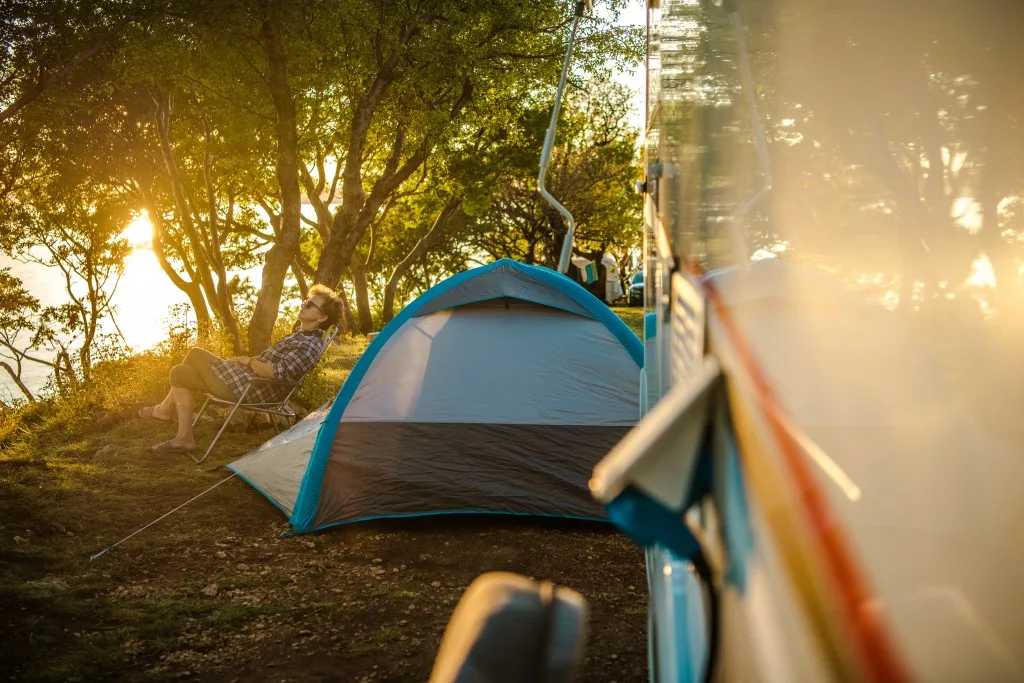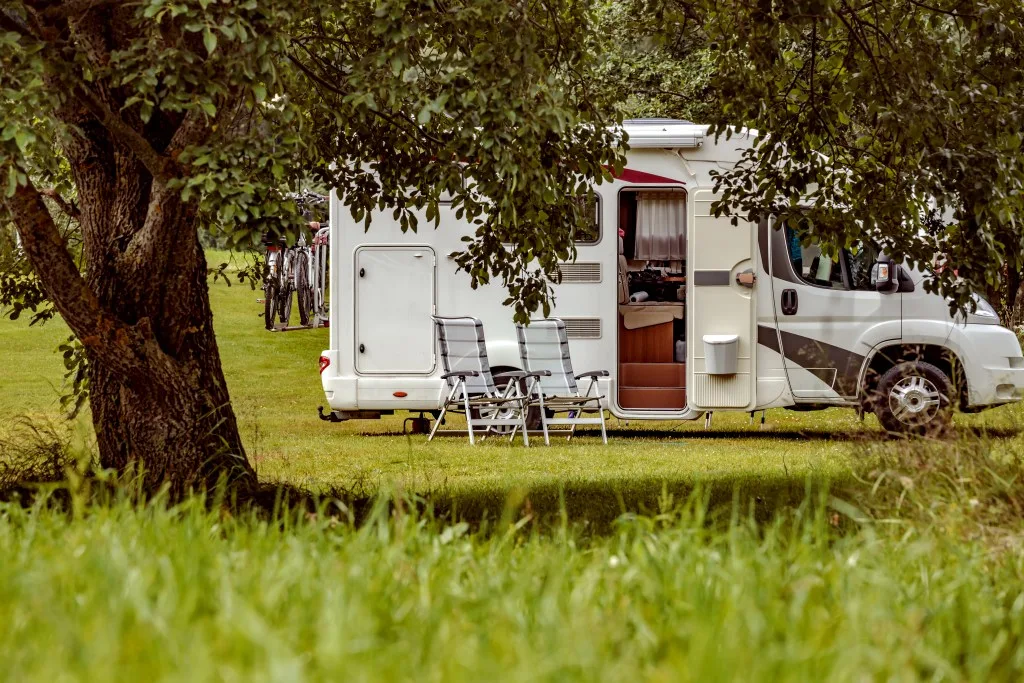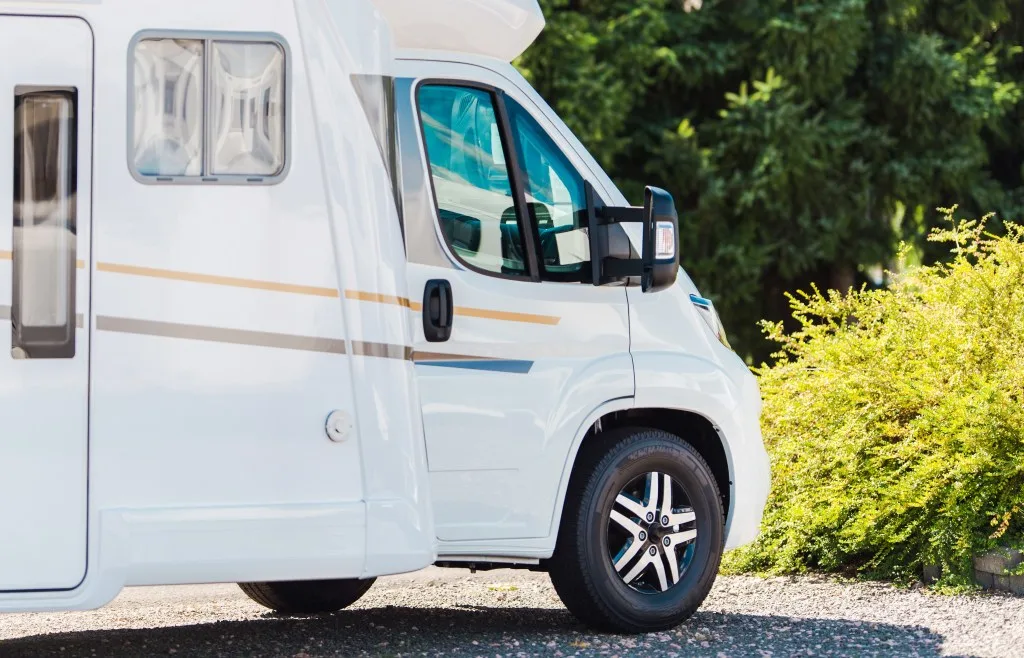Just because you’re at a full hook-up site doesn’t mean you can leave your dump valves open.
This is a common rookie mistake and one that you should avoid making. If you do, there can be some unintended consequences that will help you learn your lesson.
Today, we’ll share some information about your gray tanks and why you should keep them closed while RVing.
Let’s get started!
What Are The Different RV Holding Tanks?
If you’re new to RVs, they have a few different types of tanks. Each has a unique purpose and makes RVing easier. Let’s look at each tank and how they differ from one another.
Black Tank
The black tank is the most feared tank by many RVers. This is because the tank holds anything that gets flushed down the toilet, including raw sewage. Anytime you’re emptying this tank, you’ll want to be careful. If you’re not, you can have a “poopsie,” which is every RVers nightmare.
A “poopsie” is where you make a mistake emptying your black tank. Raw sewage will cover the ground, and there’s a good chance it’s getting on you too. Nothing will ruin your day than a “poopsie.” Always be careful when dumping your black tank. You’ve been warned!
Pro Tip: Keep your black tank in top condition by using these tips on How to Dump an RV Black Water Tank.
Gray Tank
The gray tank on an RV holds any water that goes down a sink or shower drain. Most of this water will be a mixture of soap and water from doing dishes, washing hands, and showering. However, dishwater will likely contain food particles and oils from food, which can become quite rancid the longer they sit in your tank.
If it’s been a while since the last time you emptied your gray tank, it can give your black tank a run for its money when it comes to smells.
Fresh Water Tank
A freshwater tank on an RV can be very important, especially if you plan camping away from a water source. Using these tanks, RVers can take water with them wherever they use their RV. Many campgrounds will have fill-up stations at the entrance to the campground when water isn’t available at the campsite.

How Big Is A Gray Tank?
Gray tanks vary in size depending on the RV. Smaller travel trailers will have gray tanks that range in size from 10 to 30 gallons. However, large travel trailers and fifth wheels will have gray tanks from 30 to 80 gallons. You can find some toy haulers and fifth wheels with 100-gallon gray tanks. That’s a whole lot of water!
Why Should You Keep Your Gray Tank Closed?
There are several reasons you should not keep your dump valves open. Leaving your tanks open for a night or two isn’t too big of a risk, but doing so over a long time can be a bad idea. Let’s look at what can happen.
Scum Can Harden
By regularly filling your gray tanks, you’re helping avoid any scum inside the tank from hardening. When this scum hardens, it can be very challenging to remove it. We recommend emptying your gray tank when it is at least two-thirds full to help eliminate any scum and gunk sticking inside of your tank and eventually hardening.
Buildup Leads To Odor
The scum buildup inside your tanks can develop a very putrid smell. These odors will look for a place to escape, including your RV. If scum builds up inside your gray tanks, it’s only a matter of time before you start to smell the foul smell in your RV.
Keep your gray tank closed and only dump when it’s two-thirds full. Leave some water running or take a long shower if you need to put water in your gray tank to reach the two-third capacity.
Open Gray Tanks Cause An Imbalance In RV Park’s Overall Septic System
RV parks often have septic systems with vents throughout the park. These vents help balance the system and avoid the foul smells entering your RV. However, the gasses causing the foul smells will take the path of least resistance when making their escape. By leaving your gray tank open, you could be inviting sour smells from the septic system to vent into your RV.
Bugs Can Make Their Way Into Your RV
Septic tanks and waste holding tanks are full of protein. This makes them a prime place for insects and other creatures to thrive. As gross as it sounds, there’s a chance that these sewer flies and insects living in the holding and septic tanks could find their way into your RV. Flies are gross enough on their own, but sewer flies? No, thanks!

How Long Does It Take For A Gray Tank To Fill Up?
The amount of time it takes to fill a gray tank will vary depending on the size of the RV and how often water is getting put into it. A family of four could easily fill their gray tanks during a camping weekend.
However, some experienced boondockers can make their gray tank last two or three weeks before needing to dump it. If you need to make your gray tanks last as long as possible, you’ll want to minimize the amount of water you put down any of the drains.
Reduce the length and amount of showers, or even consider showering outside when possible. This can help avoid putting water into your gray tank and help you extend the amount of time between dumping your gray tank. Many RVers will also use disposable plates and silverware to minimize washing dishes.
How Do You Empty Your Holding Tanks?
Emptying your gray tanks is relatively easy, as long as you have the right tools. You’ll need to locate a dump station, have a sewer hose, and the necessary attachments to connect your RV to the dump station. This is typically an elbow attachment with various rings around the base to help ensure a snug fit at the sewer connection.
Once you locate the dump station, pull up so the sewer drain pipe on your RV lines up directly with the dump station sewer connection. Put on a pair of disposable gloves to protect you from getting any bacteria or contamination on your hands.
Connect your sewer hose and the elbow before placing the elbow into the sewer connection at the dump station. Stretch your hose and place it under the sewer drain pipe on your RV. It’s a good idea to slowly remove the lid for the sewer pipe and catch it in the sewer hose to avoid making a mess at the dump station.
You should always drain your black tank first. If you have two gray tanks, drain the one with your kitchen and dishwater first and finish with the gray tank for shoes. This procedure helps ensure your sewer hose and attachments get washed out before you store them away.

Can You Dump Gray Water On The Ground?
This is a highly debated question in the RV community. Many in the RV community dump gray water onto the ground without considering the possible negative impacts. However, because of the potential for harm to the environment and wildlife, we don’t encourage others to dump gray water onto the ground.
Most campgrounds and boondocking locations will have regulations prohibiting the practice. Doing so can get you in serious trouble, and you could even get ejected from a campground or get a citation from law enforcement for illegal dumping. Find a dump station to dump your gray water, and you won’t have to worry about getting in trouble.
Pro Tip: Don’t know where to dump your grey water? We took a closer look at Dumping Your RV Grey Water on the Ground.
Keep Your Tanks Closed To Enjoy Your Camping Weekend
By not keeping your dump valves open, you’ll minimize the risks of harm to your RV and your nose. You don’t want to come back and discover that the inside of your RV smells like an outhouse.
So keep them closed and only empty your tanks when they’re at least two-thirds full. You can enjoy your weekend without worrying about smells invading your RV.
Discover the Best Free Camping Across the USA
To be honest with you, we hate paying for camping. There are so many free campsites in America (with complete privacy).
You should give it a try!
As a matter of fact, these free campsites are yours. Every time you pay federal taxes, you’re contributing to these lands.
Become a FREE CAMPING INSIDER and join the 100,000 campers who love to score the best site!
We’ll send you the 50 Best Free Campsites in the USA (one per state). Access the list by submitting your email below: